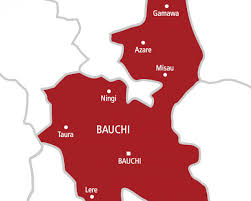An exhibition, in the most general sense, is an organised presentation and display of selected items, in practice, exhibitions usually occur within a cultural or educational setting such as a museum, art gallery, park, library, exhibition hall, or world fairs.
Exhibitions can include many things such as art in both major museums and smaller galleries, interpretive exhibitions, natural history museums and history museums, and also varieties such as more commerically focused exhibitions and trade fairs.
In British English, the word “exhibition” is used for a collection of items placed on display and the event as a whole, while in America English it’s usually an “exhibit”. In both varieties of English each object being shown within an exhibitions is an “exhibit”. In common usage, “exhibitions” are considered temporary and usually scheduled to open and close on specific dates. While many exhibitions are shown in just one venue, some exhibitions are shown in multiple locations and are called travelling exhibitions, and some are online exhibitions.
Exhibitions featuring especially fragile or valuable objects, or live animals, may be shown only during a formal presentation under the close supervision of attendant or educator. Temporary exhibits that are transported from institution to institution are travelling exhibits. Though exhibitions are common events, the concept of an exhibition is quite wide and encompasses many variables.
Exhibitions range from an extraordinary large event such as a world’s exposition to small one-artist solo shows or display of just one item. Often a team of specialists is ready to assemble and execute an exhibition, these specialists varied depending on the type of the said exhibit.
Curators are sometimes involved as the people who select the items in an exhibition. Writers and editors are sometimes needed to write text, labels and accompanying printed material such as catalogues and books.
Architects, exhibition designers, graphic designers and other designers may be needed to shape the exhibition space and give form to the editorial content. Organising and holding exhibitions also requires effective event planning, management, and logistics.
Furthermore, exhibition is the display of exhibits. Exhibitions are the materials that are presented to the audience or objects that are on display in an exhibition. Any object put on display in the aim to inspired, entertained and educate are known as exhibits. It is different from other objects found in other places. An exhibit is meaningful when its peculiar personality is brought out and presented. One important element in a museum exhibit is that, they are usually less dramatic from objects found in trade fares or objects for promotional advert purposes.
“The function of exhibits”
First, communication and this in museum means, the passing on of messages in the objects, a means of bringing the instructive values meaningfully to the person who is receiving. This is done through exhibition also it involves other technical means of passing on of messages for example, the use of audio, visual signs and symbols, labels text, graphic, pictures, diagrams, among others.
The most usual way of museum communication is communication is through direct, exhibitions and scientific explanations of museum objects that must be selected properly to attain a successful communication. In most cases, we get the objects that will retain the attention of visitors, objects that will captivate the audience.
Secondly, Interpretation, this is an educational activity which aim at revive the meaning of object by first hand experience and by illustrative media, rather than simply communicate, factual information.
In interpretation there must be literature and they must be conducted through interpretation. Interpretation uses various means of communication, like audio, visual, graphics, sensory perception through touch light, sound, among others to achieve its aims.
Interpretation is not limited to museum alone, actually, the use of the term in this sense originated from north America, amongst parties responsible for the care of natural parks and historical sites. Interpretation is not only explaining an object and its significants, it also provides a conservative message about the objects and contents.
Amina Maigari Uba,
Principal Exhibition Officer,
National Museum,
Kaduna




